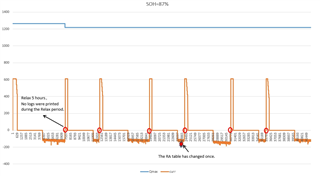hello,
Ra's updated rule has discharge current > C/10.
1, Is the discharge current obtained as an average or an instantaneous value?
2. Discharge current is acquired every 30 seconds, what is the condition for 30 seconds to start recording moments?
Is the discharge current > Dsg Current Threshold?
3, If it is an average, is it a 30 second average?
4, If the DOD grid point is exceeded, but the current is about 10mA less than C/10, does RA update?
5. Satisfy C/10, high discharge current (1A), high RA accuracy, or low discharge current (C/10), high RA accuracy?




